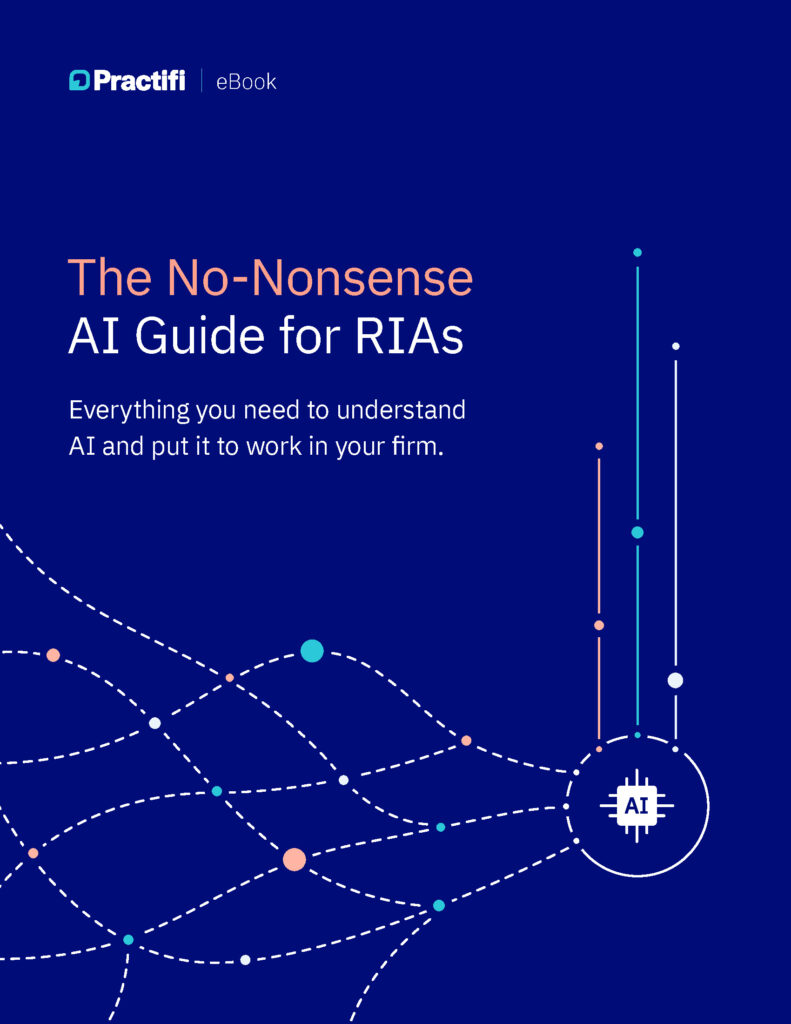
What Operational Inertia Looks Like in an RIA (and How to Fix It)
If your systems only work when one specific employee is in the office… you don’t have systems.
Every firm has one. The person who knows the workaround. Who fixes the broken filter? Who remembers where the client notes actually live? And while their deep knowledge is invaluable, relying on it puts the whole team at risk.
When critical processes live in someone’s head or rely on one person’s memory, workaround or personal workflow, your operations aren’t built to scale. They’re held together by habit and human effort.
That’s operational inertia: the slow accumulation of inefficiencies, dependencies and outdated tools that no one ever quite gets around to fixing. Not because the team doesn’t care, but because nothing feels broken enough to demand immediate attention. So, things stay the same.
Until they start slowing everything down….
Why Inertia Creeps In
Inertia doesn’t show up all at once. It builds slowly, tucked inside busy schedules and temporary short-term fixes become permanent. Most firms don’t actively choose to stick with inefficient processes. They just get through the week, the quarter, the client surge and push cleanup to later.
Inertia sticks around because systems are often “good enough for now.” Processes mostly work, as long as the right people are around to run them. And change can feel like a bigger risk than the current pain. So, nothing gets addressed — even if everyone quietly knows it could be better.
And while all of that might be manageable in the short term, it quietly eats away at time, energy and growth. What looks like stability is often just stagnation with a good attitude.
The tricky part is that operational inertia doesn’t always look like a big problem. It hides in the day-to-day. If you’re not looking closely, it can feel like normal growing pains until it starts holding your team back.
It often shows up in small ways before it becomes a bigger issue. Operational inertia might look like an advisor avoiding the CRM because it’s too clunky. Or a team member building a spreadsheet to stay organized because the internal tools don’t cut it. It might show up as a workflow that depends on a weekly Slack reminder to move forward. Or tasks getting missed anytime someone’s on vacation. Sometimes, it’s just staff adapting to inefficiencies instead of solving them, because fixing the process feels harder than living with it.
They may seem small, but they’re pointing to a bigger problem. And the longer they go unaddressed, the harder they are to untangle.
What Happens If You Don’t Fix It
Now that you’ve seen how inertia can show up in your firm, the next question is whether it’s worth addressing. For many teams, the answer is still “not yet.” Things are still getting done. Clients seem satisfied. The workarounds work — for now.
But that’s how operational drag becomes a long-term problem. What feels like a small inefficiency today often turns into a bottleneck that makes it much harder to unwind later. Ignoring it doesn’t make it harmless. It just makes it harder to spot until it starts affecting service or slowing down growth.
Here’s what can happen if inertia goes unchecked:
- Delays in client onboarding or follow-up
- Burnout from team members carrying too much process knowledge
- Inconsistent experiences across advisors or offices
- Risk exposure from undocumented workflows
- Missed opportunities to grow because systems can’t keep up
The longer those issues persist, the more they compound. Fixing them early is the simplest way to avoid bigger disruptions down the road.
3 Small Moves to Break the Cycle
Breaking operational inertia doesn’t require a full rebuild. It just takes a few smart shifts to get momentum back on your side.
1. Spot the single points of failure
Look for the tasks or tools that grind to a halt when one person is out. If only one team member knows how to run a report or prep for a client review, that’s a red flag. Document the process. Build a backup. Make it repeatable.
When critical knowledge lives in one person’s inbox or memory, the team isn’t just at risk of burnout. It’s at risk of bottlenecks. Even simple client requests can fall through the cracks if the go-to person is away, out of the office or already overloaded.
Start by identifying the high-dependency areas in your firm. Build shared access. Define clear steps. Make sure others can step in without disruption.
2. Simplify before you scale
Don’t try to overhaul everything at once. Choose one clunky, repetitive process like onboarding, prep meetings or client follow-ups and clean it up. Automate what you can. Delegate what you should. A few small wins build trust and traction.
These friction points are often hiding in plain sight. Your team just works around them because they always have. But even one cleaner workflow can free up hours each week, boost morale and create space for bigger changes
Once you simplify a process, take the time to document it. Share it with the team. Let that success story set the tone for right-sized, effective change.
3. Modernize with margin in mind
The right tech shouldn’t add complexity. It should remove busywork, centralize information and make it easier for your team to move faster. If your CRM feels like another system to babysit, it might be time to rethink your tools. Modernizing doesn’t have to mean replacing everything. It can start with a few smart changes that free up your team’s time and attention.
Look for tools that:
- Trigger tasks automatically based on client actions
- Centralize prep, notes and follow-ups in one place
- Replace manual tracking with simple workflows
- Surface key information without digging through menus
These shifts may seem small, but they compound quickly. The more your systems support your team, the more margin you create for higher-value work.
Forward Motion Over Perfect Systems
Operational change doesn’t have to be dramatic to be effective. In fact, chasing a perfect system is often what keeps firms stuck in the first place. Progress starts by choosing one thing to fix and actually fixing it. That’s how momentum builds. That’s how inertia breaks.
So, here’s the question: What’s one process your firm has outgrown?
Maybe it’s client onboarding that takes ten steps too many. Or meeting prep that lives across three platforms. Or a CRM workflow that no one actually follows. Whatever it is, name it. Then take the first step toward making it easier, faster and repeatable. The sooner you start, the sooner your team stops working around the system and starts working with it.












